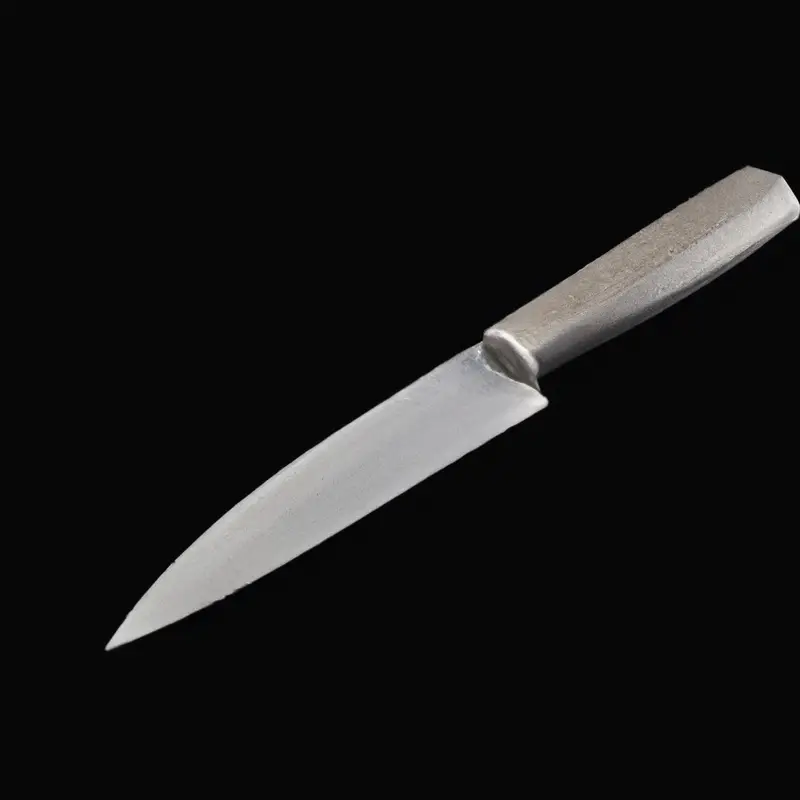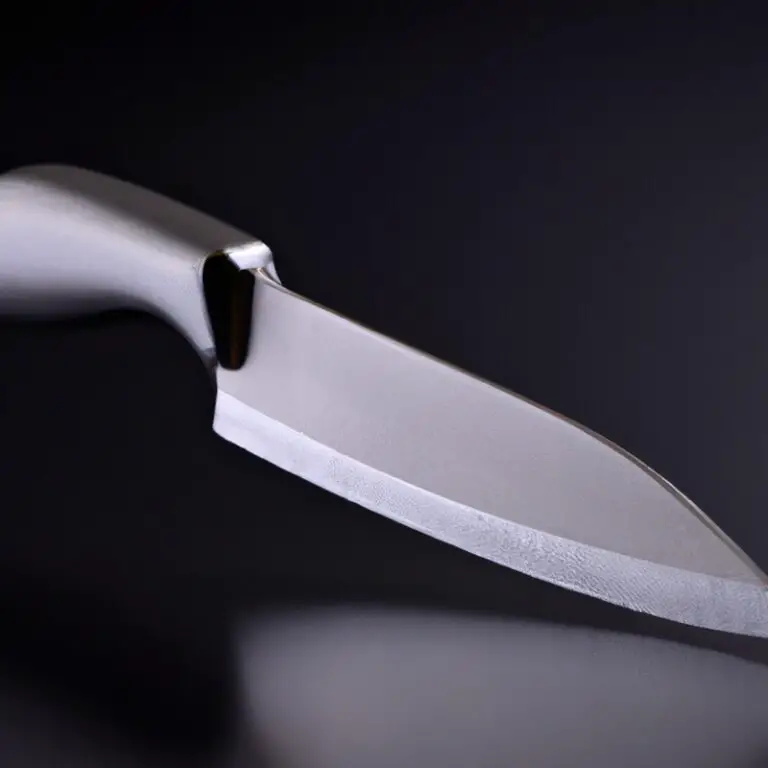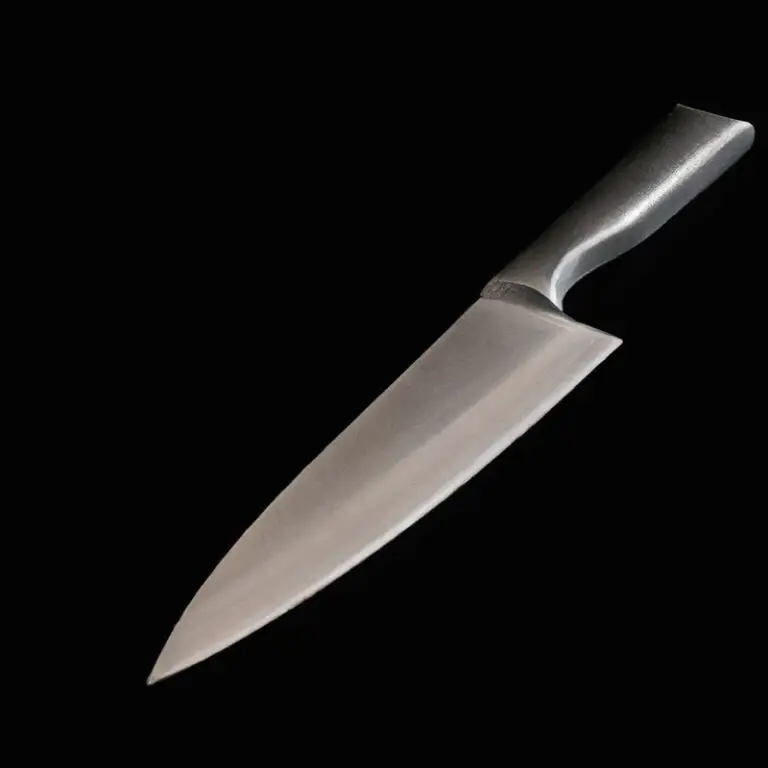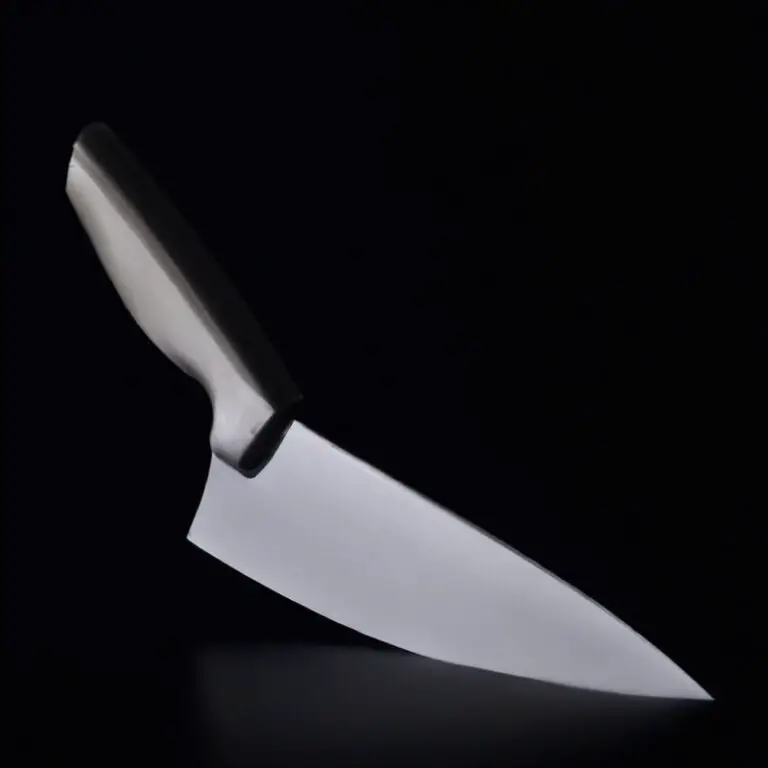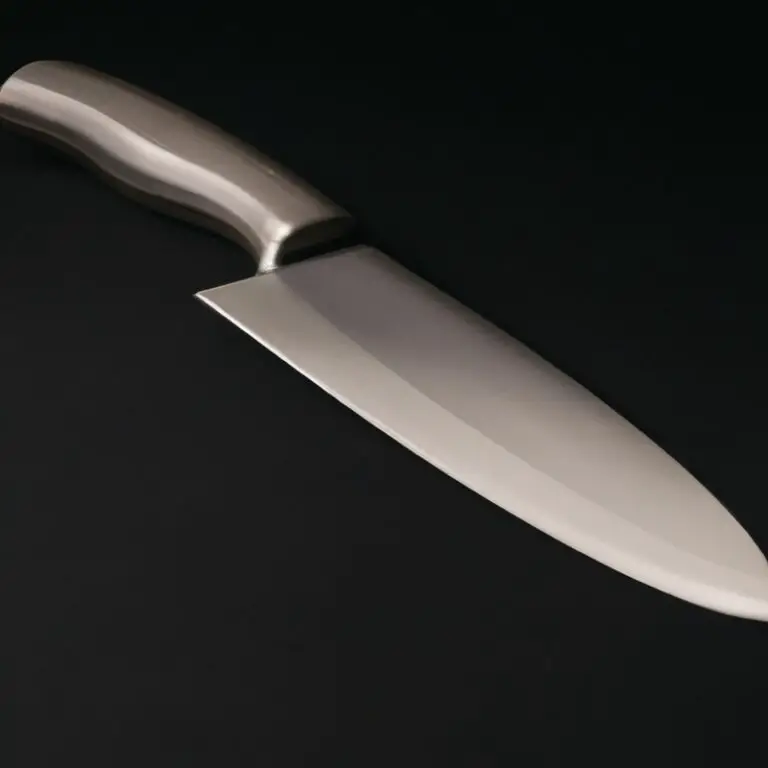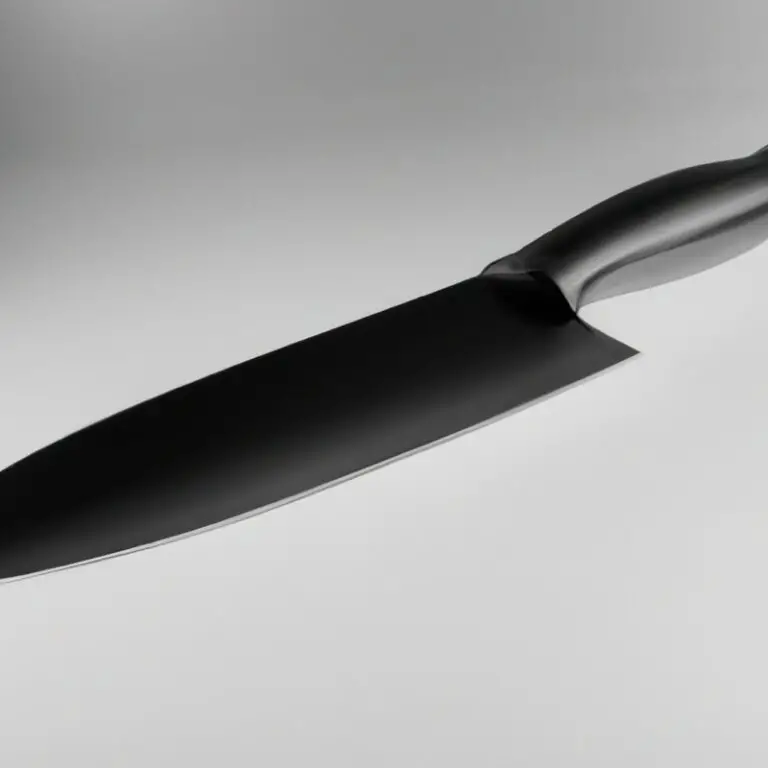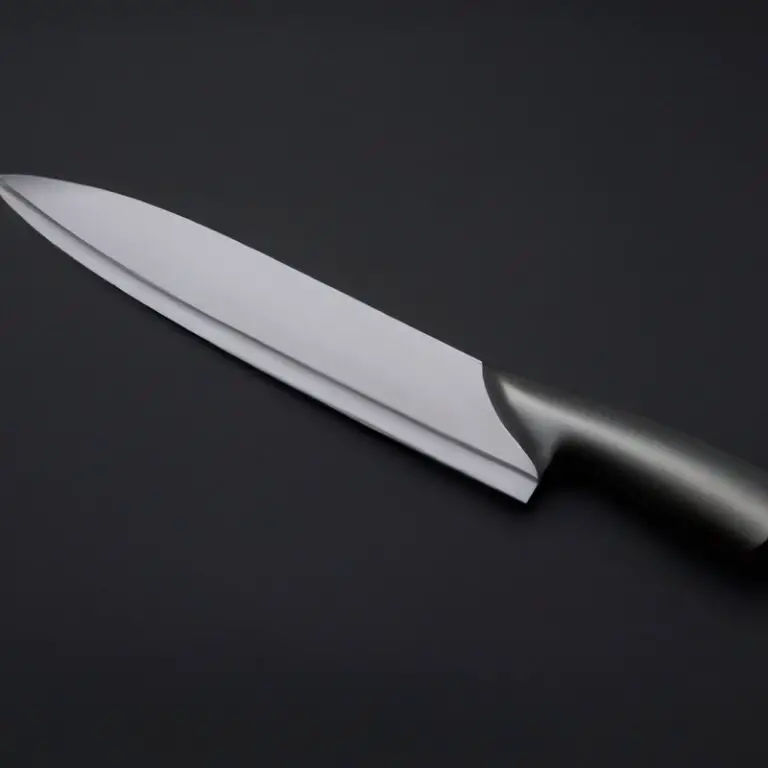How To Cut Through Slippery Fruits With a Santoku Knife? Easy!
Key Takeaways:
- A Santoku knife’s sharp and wide blade is perfect for cutting through slippery fruits like tomatoes and mangoes.
- Proper technique, such as using a sawing motion and keeping a firm grip on the fruit, is key to safely and effectively cutting through slippery fruits with a Santoku knife.
- Always keep your Santoku knife sharp to avoid accidents and ensure clean cuts.
- With a little practice and patience, cutting through slippery fruits with a Santoku knife can become a breeze and elevate your culinary skills.
Slippery fruits like tomatoes, avocados, and mangoes can be a challenge to cut through. Using the right knife and technique can make all the difference.
Enter the Santoku knife – a versatile and efficient tool with a unique design that makes it perfect for tackling slippery fruits.
As someone who has struggled to cut through a ripe avocado without making a mess, I understand the frustration. With this guide, I’ll share my insights on how to use a Santoku knife to cut through slippery fruits with ease while avoiding common mistakes and maintaining the knife’s sharpness.
| Step | Description |
|---|---|
| 1 | Choose a ripe and slippery fruit, such as a mango. |
| 2 | Hold the fruit steady with your non-dominant hand. |
| 3 | Using a Santoku knife, cut off the two ends of the fruit. |
| 4 | Place the fruit on one of the flat ends. |
| 5 | Cut down the fruit from top to bottom, following the curve of the fruit. Use a gentle sawing motion if needed. |
| 6 | Repeat step 5 on the other side of the fruit. |
| 7 | If needed, cut off any remaining flesh from the fruit core. |
Understanding the Santoku Knife and its Features for Cutting Slippery Fruits
The Santoku knife is a versatile kitchen tool originally from Japan. It has a deep and thin blade with a striking edge and a pointed tip, offering a perfect balance between precision and sharpness.
It is an ideal choice for cutting slippery fruits like mangoes, papayas, and watermelons.
The blade’s wide surface area provides ample room for rocking and slicing, while the pointed tip allows for detailed cuts. The Santoku knife’s flat spine ensures precise and controlled cuts while keeping the blade upright.
It also has a dimpled surface, which minimizes friction between the blade and the fruit, reducing the chances of the blade sticking to the fruit and causing uneven cuts.
Its ergonomic handle offers a comfortable grip, preventing the knife from slipping and ensuring cutting safety. The Santoku knife is also lightweight and easy to maneuver, making it a favorite among experienced and novice chefs alike.
Preparing Slippery Fruits for Cutting with a Santoku Knife
Before using a Santoku knife to cut through slippery fruits, it is essential to prepare them correctly. Washing the fruit, drying it with a cloth, and removing any dirt or debris from the skin are the first steps to take.
Next, cut off any stems, leaves or other inedible parts, and slice the fruit in half lengthwise.
Removing the pit or seeds should come next, followed by slicing the fruit into smaller sections or cubes, depending on your desired outcome. Additionally, using a paper towel or kitchen cloth to hold the fruit steady while cutting can prevent slips and accidents.
Proper preparation of slippery fruits helps to make the cutting process more manageable, reducing the risk of injury and producing cleaner slices.
Holding a Santoku Knife Correctly for Safe and Effective Cutting of Slippery Fruits
To hold a Santoku knife correctly for safe and effective cutting of slippery fruits, grip the handle with a firm, yet comfortable hold, while placing your index finger on top of the blade for better control and stability. Keep your other fingers wrapped around the handle to provide support and balance to the knife.
Make sure your thumb is securely placed on the opposite side of the handle for more precision when cutting.
Avoid using excessive force or pressure on the blade as this can be dangerous and may cause the knife to slip. Instead, allow the blade’s sharpness and weight to do the work for you.
With the right technique, holding a Santoku knife can ensure safe and precise cutting of slippery fruits such as mangoes, kiwis, and pineapples.
Perfecting the Technique of Rocking and Slicing for Slippery Fruits with a Santoku Knife
Perfecting the technique of rocking and slicing with a Santoku knife is important for safe and effective cutting of slippery fruits. Start by placing the fruit on a stable surface and cutting off the ends to create flat surfaces.
Hold the fruit firmly with your non-dominant hand and use a small indent to guide your Santoku knife.
Begin by rocking the knife back and forth to create a small incision. Use a slicing motion to cut through the fruit in a controlled manner, applying even pressure.
Repeat the motion until the desired thickness or shape is achieved.
Remember to keep your fingers away from the blade and work slowly to prevent slipping. Practice this technique regularly to improve your skills and make cutting slippery fruits with a Santoku knife effortless.
Maintaining the Sharpness of a Santoku Knife for Seamless Cutting of Slippery Fruits
Maintaining the sharpness of a Santoku knife is crucial for seamless cutting of slippery fruits. Here are some tips to keep your Santoku knife sharp:
- Sharpen your knife regularly: Use a sharpening stone or a honing rod to sharpen your Santoku knife regularly. A sharp knife cuts through fruits effortlessly, reducing the chances of slips and injuries.
- Store your knife properly: Store your Santoku knife in a knife block or a sheath to avoid it coming into contact with other utensils, which can dull the blade.
- Handwash your knife: Avoid using a dishwasher to clean your Santoku knife. Wash the blade by hand with mild soap and water, making sure to dry it properly before storing.
- Avoid using glass or marble cutting boards: These hard surfaces can dull your knife quickly. Instead, use a wooden or plastic cutting board.
By following these tips, you can maintain the sharpness of your Santoku knife and improve your cutting experience with slippery fruits.
Using a Cutting Board Suitable for Slippery Fruits with a Santoku Knife
Choosing the right cutting board is equally important when cutting slippery fruits with a Santoku knife. Ideally, you should opt for a board that is gentle on your knife blade and has a surface that prevents your fruits from slipping away.
Wooden and bamboo cutting boards are suitable options as they are naturally non-slip and won’t dull your knife’s edge quickly.
Plastic cutting boards can also work well, especially if they come with non-slip grips or a textured surface. Avoid using glass or ceramic cutting boards as they are too hard and can damage your knife.
Always clean and sanitize your cutting board before each use to prevent cross-contamination.
Avoiding Common Mistakes in Cutting Slippery Fruits with a Santoku Knife
To avoid common mistakes in cutting slippery fruits with a Santoku knife, it is important to take certain precautions. Firstly, make sure that the knife is sharp and be extra careful while using it.
Keep your fingers away from the blade and slice with a controlled movement.
Do not apply too much pressure while cutting as it can cause the fruit to slip from your hand and can also cause the blade to slip, leading to accidents. Additionally, it is important to use a cutting board with a non-slip surface to prevent the fruit from moving around and causing accidental slips.
Another common mistake is holding the knife at too steep of an angle, which can make it difficult to cut through the slippery fruit.
Hold the Santoku knife at a shallow angle to slice through the fruit effectively. Finally, practice the rocking and slicing technique to cut through the fruit efficiently.
With these simple tips, you can avoid common mistakes while cutting slippery fruits with a Santoku knife.
Choosing the Right Size of Santoku Knife for Cutting Slippery Fruits
Choosing the right size of Santoku knife for cutting slippery fruits is crucial to ensure safety, precision and effectiveness. The most recommended size of Santoku knife for cutting slippery fruits such as watermelon, pineapple, or mango is between 5 and 7 inches.
This size provides enough blade length to cut through the fruit, while also maintaining control and stability.
A knife that is too small may not have enough blade length to cut through large fruits, while a knife that is too large may be difficult to control and may cause accidents. Additionally, a smaller size is also easier to handle, allowing for more accuracy in your cuts.
It’s important to keep in mind that this recommendation is not set in stone and ultimately depends on your personal preference and the size of the fruit you’re cutting.
Some people may prefer a larger Santoku knife for cutting larger fruits, and that’s okay as long as they feel comfortable and confident while using it. In summary, when it comes to choosing the right size of Santoku knife for cutting slippery fruits, it’s best to stick to a blade size between 5 and 7 inches.
Ensure accuracy, control, and safety by choosing a size that fits your preferences and the size of the fruit you’re cutting.
Comparing a Santoku Knife to Other Knives for Cutting Slippery Fruits
When comparing a Santoku knife to other knives for cutting slippery fruits, the main advantage lies in its design. Unlike other knives that have a curved blade, the Santoku knife features a straight blade, allowing for more contact with the fruit’s surface.
Additionally, its granton edge (dimpled edge) reduces the surface area that the fruit comes into contact with, resulting in less friction and preventing the fruit from sticking to the blade.
Compared to a chef’s knife, which has a more curved blade, the Santoku knife requires less rocking motion and is better suited for slicing rather than chopping. This makes it ideal for delicate fruits like tomatoes and kiwis, which require a delicate touch to avoid crushing or damaging them.
In summary, while other knives can be used for cutting slippery fruits, the design of the Santoku knife makes it particularly well-suited for this task.
Its straight blade and granton edge reduce friction and prevent sticking, while its slicing motion and delicate touch make it ideal for precise cuts. Ultimately, the Santoku knife’s unique design enables users to make clean, effortless cuts through even the slipperiest of fruits.
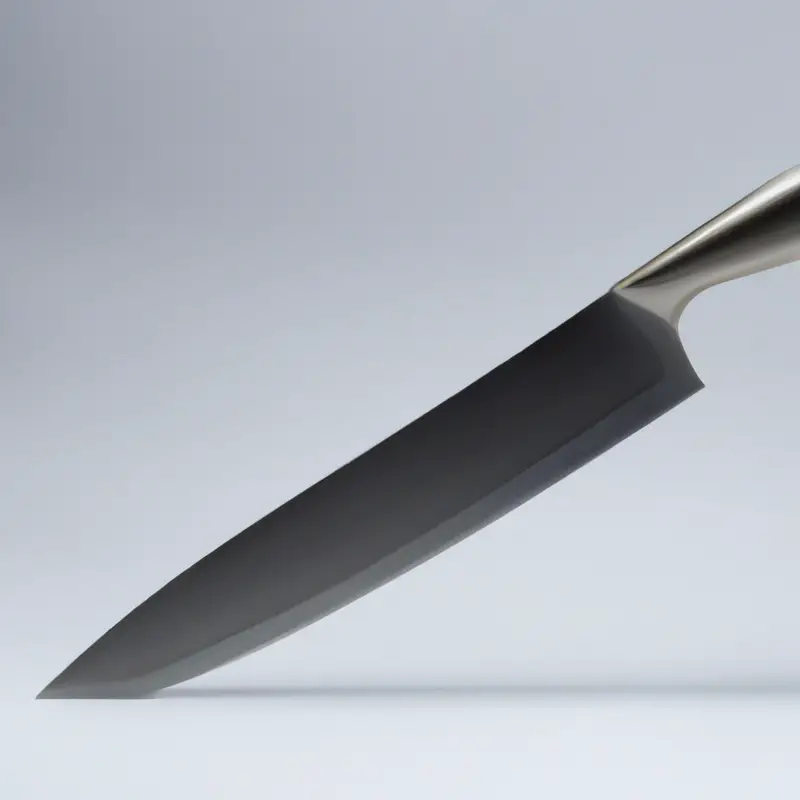
Tips for Cleaning and Storing a Santoku Knife after Cutting Slippery Fruits
To maintain the quality and longevity of a Santoku knife, proper cleaning and storage after cutting slippery fruits are vital. Here are some tips to keep in mind:
- Rinse the knife immediately under running water and wipe it dry with a clean cloth.
- Avoid leaving the knife wet for too long as it can cause rust and damage the blade.
- Use a gentle dish soap to clean the knife, and avoid using abrasive scrubbers or cleaners.
- Dry the knife thoroughly before storing it to prevent rusting.
- For storage, use a knife block or a sheath to keep the blade protected and prevent it from dulling or chipping.
- Avoid storing the knife with other utensils where it can become damaged or dull.
By following these tips, users can maintain the sharpness and quality of their Santoku knife for years to come, ensuring seamless and effortless cutting of slippery fruits in the long term.
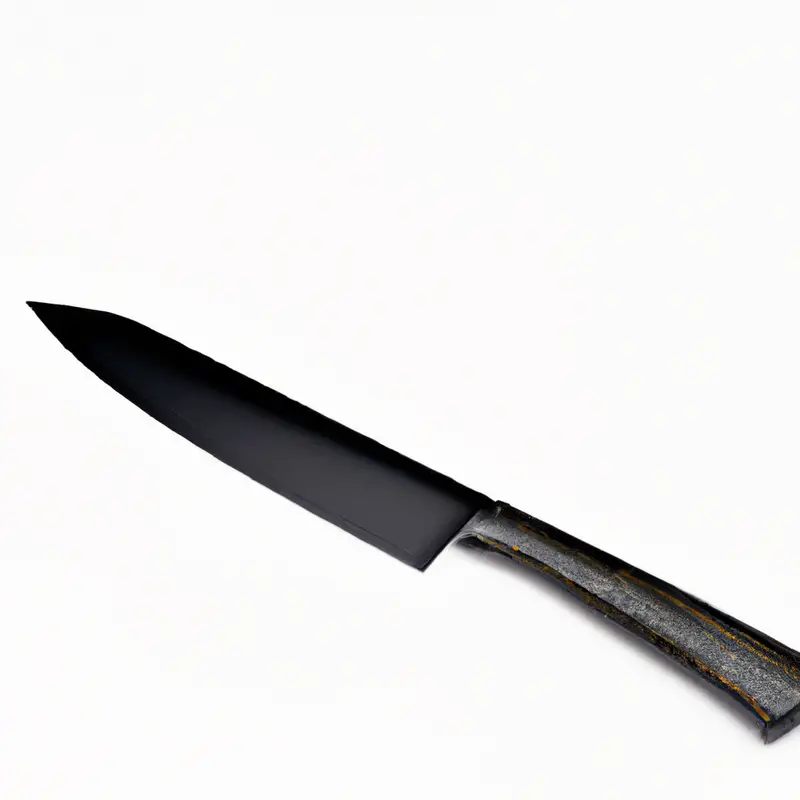
Final Verdict
Cutting slippery fruits can be a daunting task, but with a santoku knife, it can be done with ease and precision. By reviewing the key features and techniques, you can ensure safe and effective cutting of slippery fruits.
Remember to maintain the sharpness of your knife, use a suitable cutting board, and avoid common mistakes for seamless slicing.
With the santoku knife in your arsenal, you’ll be able to cut through even the slipperiest fruits with confidence. As a final takeaway, always remember to clean and properly store your santoku knife to maintain its longevity and effectiveness in the kitchen.
Trust the santoku knife as your go-to for all your slippery fruit cutting needs.

